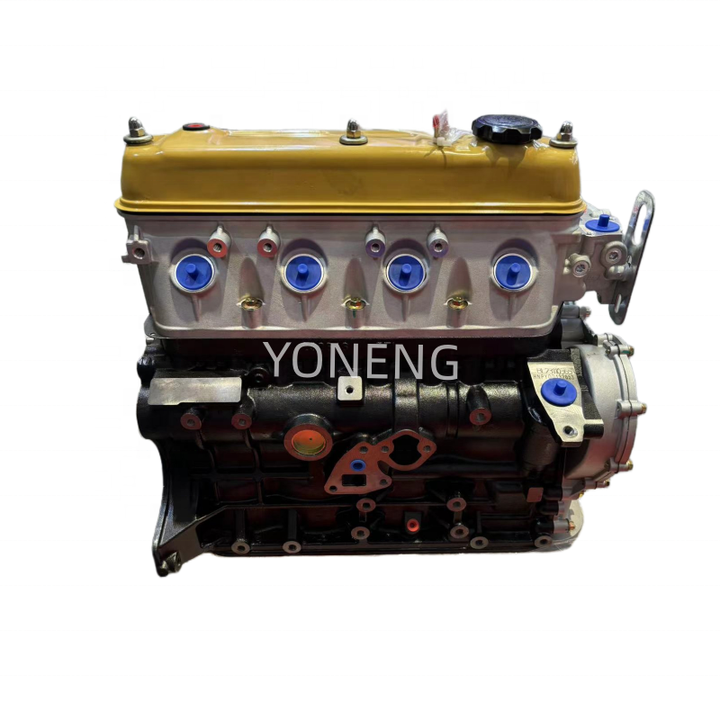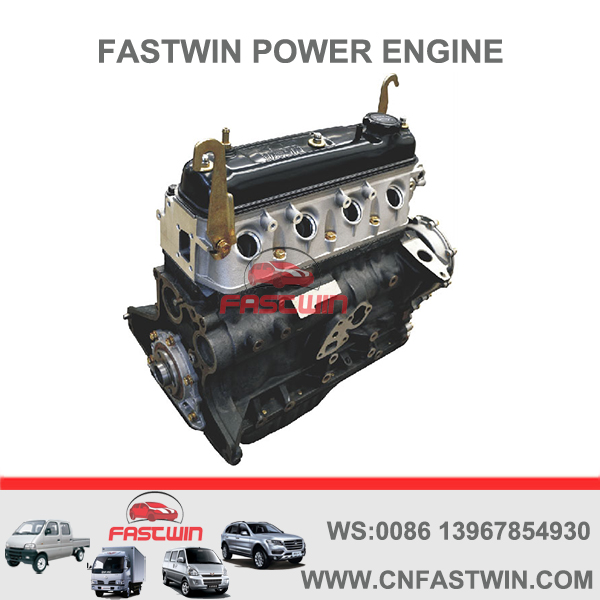The Ultimate Guide to the Engine: Key Insights for every single Auto Enthusiast
Recognizing the engine is essential for any type of automobile lover, as it serves as the heart of the vehicle and dictates its performance. This guide supplies a comprehensive evaluation of engine makeup, types, and the auto mechanics behind their operation, including the cutting-edge innovations that are improving the vehicle landscape. Additionally, it underscores the essential nature of upkeep practices that can significantly influence an engine's life-span. The complexities of engine characteristics and the newest developments in modern technology present concerns that merit more exploration. What might these insights reveal about the future of vehicle engineering?
Makeup of an Engine
Comprehending the composition of an engine is critical for any car fanatic wanting to dive much deeper right into auto auto mechanics. An interior combustion engine mostly contains a number of vital elements that operate in unison to transform gas right into power.
At the heart of this system lies the cyndrical tube block, which houses the cyndrical tubes where combustion takes place. Piston movement within these cyndrical tubes is facilitated by the crankshaft, which translates straight motion right into rotational power. In addition, the camshaft plays a crucial duty in controlling the opening and closing of the engine's shutoffs, making certain proper air-fuel blend intake and exhaust gas expulsion.
Various other crucial components include the fuel system, which provides the engine with the needed gas, and the ignition system, accountable for launching combustion - 4y engine. The cooling and lubrication systems are likewise integral, maintaining ideal operating temperatures and minimizing friction, respectively
Engine Types and Configurations
A diverse range of engine types and configurations exists, each offering distinct advantages and disadvantages tailored to various driving requirements and preferences. The most usual engine types consist of inline, V, flat, and rotating arrangements.
Inline engines, featuring cylinders arranged in a single line, are recognized for their simplicity and performance. They are often found in small cars, using a balance of power and economy. V engines, identified by their 2 banks of cylinders set up in a V form, offer greater performance and smoother operation, making them preferred in sporting activities and high-end cars and trucks.
Flat engines, or fighter engines, have horizontally opposed cyndrical tubes, which add to a lower center of mass, improving lorry stability. These are typically seen in brand names like Subaru and Porsche.
Rotating engines, although much less typical, utilize an one-of-a-kind design with a triangular blades and offer high power-to-weight proportions. They master small and light-weight applications, primarily seen in Mazda automobiles.
Each engine type serves details performance qualities, weight distributions, and gas effectiveness, ensuring that auto enthusiasts can select the appropriate engine setup to match their driving design and vehicle needs.

Just How Engines Work
Engines, no matter their kind or arrangement, operate fundamental principles that govern their efficiency and efficiency. At their core, engines convert gas right into power with a series of regulated explosions or compressions. This procedure commonly includes 4 main strokes: consumption, exhaust, compression, and power.
During the consumption stroke, the engine pulls in a blend of air and fuel. The compression stroke follows, where the mix is compressed in the cyndrical tube, boosting its temperature More Help level and pressure. In the power stroke, a trigger ignites the pressed mix (in gasoline engines) or the combination sparks automatically (in diesel motor), leading to a rapid expansion of gases that presses the piston down. The exhaust stroke eliminates the spent gases from the cylinder. 4y engine.
The efficiency of an engine is affected by various elements, consisting of the style of the burning chamber, the kind of gas made use of, and the precision of the engine's parts. Understanding these fundamental concepts is vital for car fanatics that look for to value the elaborate auto mechanics behind their lorries, as well as for those intending to enhance performance via adjustments and adjusting.
Developments in Engine Modern Technology
Recently, developments in engine innovation have considerably changed the auto landscape, boosting both efficiency and environmental sustainability. Among one of the most notable advancements is the growth of turbocharging and supercharging, which enables smaller sized engines to produce better power results without sacrificing gas performance. This has caused a rise in the appeal of downsized engines, supplying suppliers with the ability to satisfy rigid discharges guidelines while keeping efficiency requirements.
Furthermore, hybrid and electric powertrains are improving the engine standard. Hybrid systems integrate internal combustion engines with electric motors, enhancing gas intake and minimizing emissions. Completely electric cars (EVs) remove the burning engine altogether, relying upon innovative battery modern technology to supply immediate torque and remarkable acceleration.
Moreover, the assimilation of man-made intelligence and device understanding investigate this site in engine management systems enables real-time optimization of efficiency parameters, improving performance and responsiveness. Technologies such as variable shutoff timing and straight gas shot additionally improve combustion processes, taking full advantage of power result while reducing waste.
As the automobile sector continues to advance, these advancements in engine innovation will play an important duty in shaping the future of movement, prioritizing both performance and sustainability.
Upkeep Tips for Fanatics
Maintaining an engine is as crucial as the advancements that enhance its performance. Normal upkeep not just lengthens the life of your engine but also guarantees ideal efficiency. Start with regular oil changes, adhering to the manufacturer's recommendations for oil type and adjustment periods. Clean oil lubes engine parts properly, preventing wear and tear.
Inspect and change air filters regularly to ensure correct air flow, which is important for burning effectiveness. A clogged air filter can bring about lowered efficiency and increased gas intake. Check the coolant levels to prevent overheating, and replace coolant according to the solution schedule. 4y engine.

Conclusion
To conclude, an extensive understanding of engine makeup, types, and mechanics is necessary for auto fanatics. The exploration of developments such as turbocharging and hybrid systems highlights the innovations in efficiency and effectiveness. Routine maintenance techniques, including oil changes and air filter checks, are vital for guaranteeing ideal engine functionality and durability. Proficiency of these ideas fosters a deeper gratitude for engine characteristics and boosts the overall driving experience.

Engines, no matter of their kind or arrangement, operate on basic principles that govern their performance and performance. In the power stroke, a spark stirs up the pressed mix (in fuel engines) or the combination sparks automatically (in diesel engines), resulting in a rapid growth of gases that presses the piston down.In current years, innovations in engine modern technology have substantially changed the vehicle landscape, enhancing both efficiency and environmental sustainability.
Comments on “How the 4Y Engine Compares to Other Engines in Terms of Fuel Efficiency”